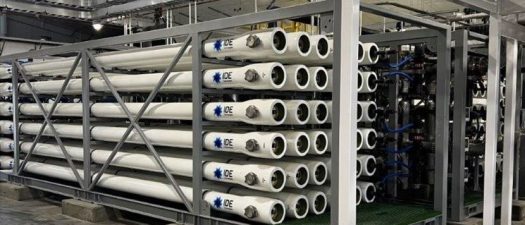Across industries, the move toward sustainability is no longer optional — it’s essential. .
Beyond Filtration: Addressing Fouling Challenges in Water Treatment

In today’s era of growing industrial demands and environmental challenges, water management has become a crucial aspect of sustainable development. Efficient water management involves not only the supply and distribution of water but also the enhancement of water quality through advanced treatment processes. As we delve into the intricacies of maintaining high-performance filtration systems, it’s important to understand how water management strategies are pivotal in preventing issues like fouling, which can severely impact the effectiveness of these systems.
Understanding Fouling in Water Treatment Systems
Fouling in filters and membranes represents a significant challenge in water management. This process involves the accumulation of unwanted substances either on the surface or within the pores of the filtration media. Commonly seen in systems treating municipal or industrial wastewater, fouling can decrease the efficiency of the filtration process, leading to increased maintenance costs and potential equipment failure.
The science behind fouling encompasses a variety of physical, chemical, and biological interactions that lead to the blockage or clogging of filters or membranes, thereby reducing their operational efficiency. The materials affected may range from sand and anthracite in multimedia filters to ultrafiltration and reverse osmosis membranes in more advanced setups.
Types of Fouling and Their Impact on Water Management
Fouling can be categorized into four primary types, each affecting water management in different ways:
- Physical Fouling: This type occurs when suspended particles such as sand, silt, and clay accumulate on the membrane or filter surface. These particles can settle in low-velocity areas, leading to blockages and a reduction in filtration efficiency.
- Organic Fouling: Organic compounds from natural water sources or industrial processes can adhere to membrane surfaces, forming gel-like layers that increase pressure drop and reduce filtration rates.
- Biofouling: Microorganisms like bacteria and algae can form biofilms on membrane surfaces, especially in systems using natural water sources or where water stagnation occurs. This form of fouling can severely clog membrane pores and disrupt flow dynamics.
- Chemical Fouling (Scaling): Chemical reactions, often exacerbated by temperature changes or pH imbalances, can lead to the precipitation of minerals like calcium carbonate on membranes, damaging them or altering their properties.
Optimizing Water Management Through Effective Fouling Control
To enhance water management and extend the lifespan of filtration systems, it is essential to implement effective strategies against fouling:
- Preventive Maintenance: Regular cleaning and appropriate pre-treatment, such as effective coagulation and sedimentation, are critical. These steps help remove potential foulants early in the process, safeguarding the health of the entire system.
- System Design and Operational Strategies: Selecting the right membrane types and system configurations can minimize the risk of fouling. Technologies such as high crossflow systems and pulse flow reverse osmosis help reduce fouling buildup.
- Advanced Technologies such as:
Nanotechnology: New nanofiltration membranes offer higher permeability and selectivity, allowing for more efficient filtration of smaller particles and contaminants.
Hybrid Systems: Combining different types of membranes, such as microfiltration and nanofiltration, can handle a wider range of contaminants and improve overall water quality.
Pulse Flow RO: Pulse Flow Reverse Osmosis technology (PFRO) is a single-stage process that periodically discharges the brine flow in short, high-velocity bursts. This pulse flow process, featuring shorter cycles than the induction time, achieves extremely high supersaturation of dissolved minerals, thus preventing crystal formation.
- Monitoring and Adaptation: Continuously monitoring system parameters and adapting operational strategies can prevent severe fouling incidents and reduce the need for intensive maintenance. By addressing the root causes and mechanisms of fouling, researchers and engineers can design better membranes, optimize operational conditions, and implement more effective fouling control strategies.
- Plant Historical Data Analysis:
Analyzing flow, TSS, pH, salinity, pressure, temperature, and other historical data can be useful to determine the real plant situation/membrane behavior before major fouling occurrences and help to avoid breakdowns in the plant.
- Cleaning Protocols:
Developing effective chemical and physical cleaning methods to remove foulants, conducting periodic chemical cleaning and maintenance to remove deposits before they become severe is essential. Use specific cleaning agents tailored to the type of fouling (e.g., acid cleaning for scaling and alkali for organic).
Environmental Considerations in Water Management
Effective water management is crucial for maintaining the efficiency and longevity of filtration systems. By understanding the types and causes of fouling and implementing strategic prevention and maintenance techniques, water management professionals can enhance system performance and sustainability. Managing fouling effectively also has significant environmental implications. By reducing the frequency and intensity of chemical cleanings and minimizing energy consumption, we can lower the environmental footprint of water treatment processes.
This proactive approach not only supports industrial and municipal needs but also contributes to the broader goal of preserving our water resources for future generations.
















